Wilson's 1955-56 Catalog and the Future of Face Masks
I've written about the evolution of face masks in the past, but a recent acquisition illustrates how the future of face masks took a turn in the mid-1950s.
Football faced a critical juncture in head protection in the 1950s. Riddell introduced plastic helmets in 1940, but plastics became unavailable for civilian use within a year, so leather remained the primary material for helmet construction until post-war. As the 1940s closed and the 1950s began, plastic helmets quickly became the preferred tool, though a strong and vocal opposition argued that the hard surface of plastic helmets endangered others more than it helped wearers. The NFL banned plastic helmets for one year, and some coaches prohibited their teams from using them.
Along with the plastic helmet of the early 1950s came various face masks. The nose guard preceded the face mask in 1892. Full-face executioner's masks arrived in the 1920s, along with birdcage face masks. The latter looked much like today's face masks but tended to cover only the top half of the face, so they worked for players with injured noses or eyeglasses.
Plastic helmets were sufficiently effective for the wearer that they affected play, with heads used more recklessly. The helmet's rigidity also meant it hurt more when hit in the face with a plastic helmet than a leather helmet. The combination led to increased demand for better facial protection. The demand also resulted from more and more players wearing birdcage face masks, leading to more of birdcages hitting another player's face.
Equipment manufacturers went to work. They followed the nose guard model by creating protective devices that rested directly on the face and the birdcage model that extended from the helmet. The 1955-56 Wilson Fall and Winter catalog shows both types of face masks across three pages.'
Wilson's most touted product was the Grid-Gard, made of clear Lucite. Pads beneath the Lucite helped with comfort, as did the breathing hole and the ability to snap it on and off like a chin strap. That function likely helped with condensation issues and ease of getting the helmet on and off. Other models affixed to the helmet with leather laces, as can be seen on the F2880 model, which has clear plastic wrapping around the rim at the forehead.
Also shown are plastic versions of the clear plastic bar face mask, a style made famous by Otto Graham, and the Guardsman, made of Ensolite. Likely the most unattractive facial protection since the nose guard, the Guardsman did not prove popular.
The following catalog page shows Wilson's birdcage face masks. None of the models seem remarkable today since they represent the path football traveled rather than going down Grid-Gard Lane.
The first, second, and fifth models covered the eyes and nose only, while the third and fourth extended down the face to protect the jaw, much like linemen's face masks from the 1960s and everyone's from then on.
Grid-Gard and its brethren preceded the birdcage masks in the catalog and were Wilson's latest development, so Wilson likely wanted that design to succeed, but the fact that designs of that type looks strange today confirms that football chose a different direction.
Football ultimately went the birdcage route. The Lucite Grid-Gard, bar, and the Guardsman products (and comparable competitive products) disappeared from sporting goods catalogs by the early 1960s, while birdcages continued evolving but look remarkably consistent with those of the 1950s, at least to my eyes.
As always, anyone who recalls using the Grid-Gard-style masks or has insight into their shortcomings is encouraged to comment below.
Click here for options on how to support this site beyond a free subscription.



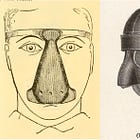
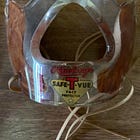

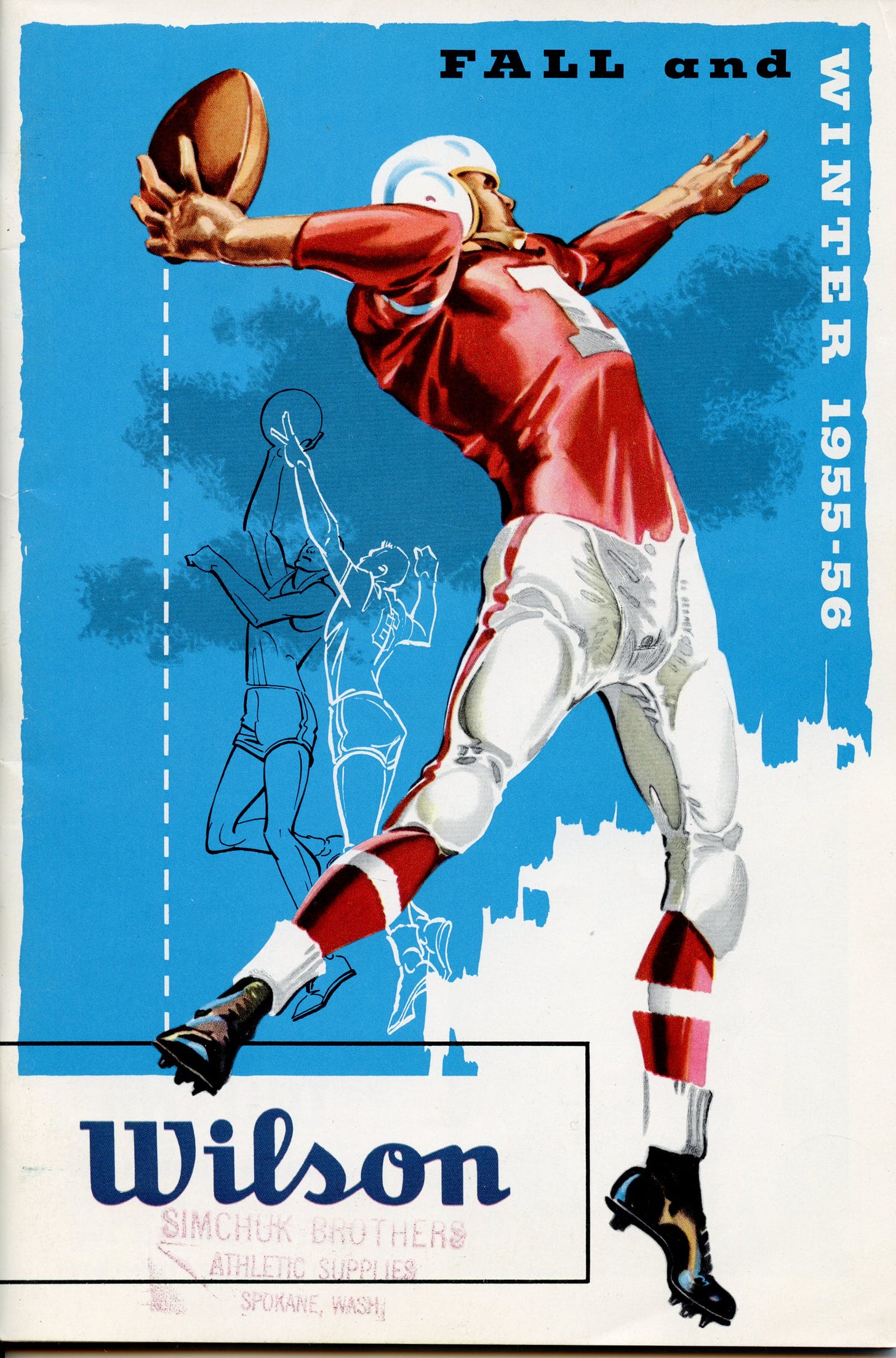
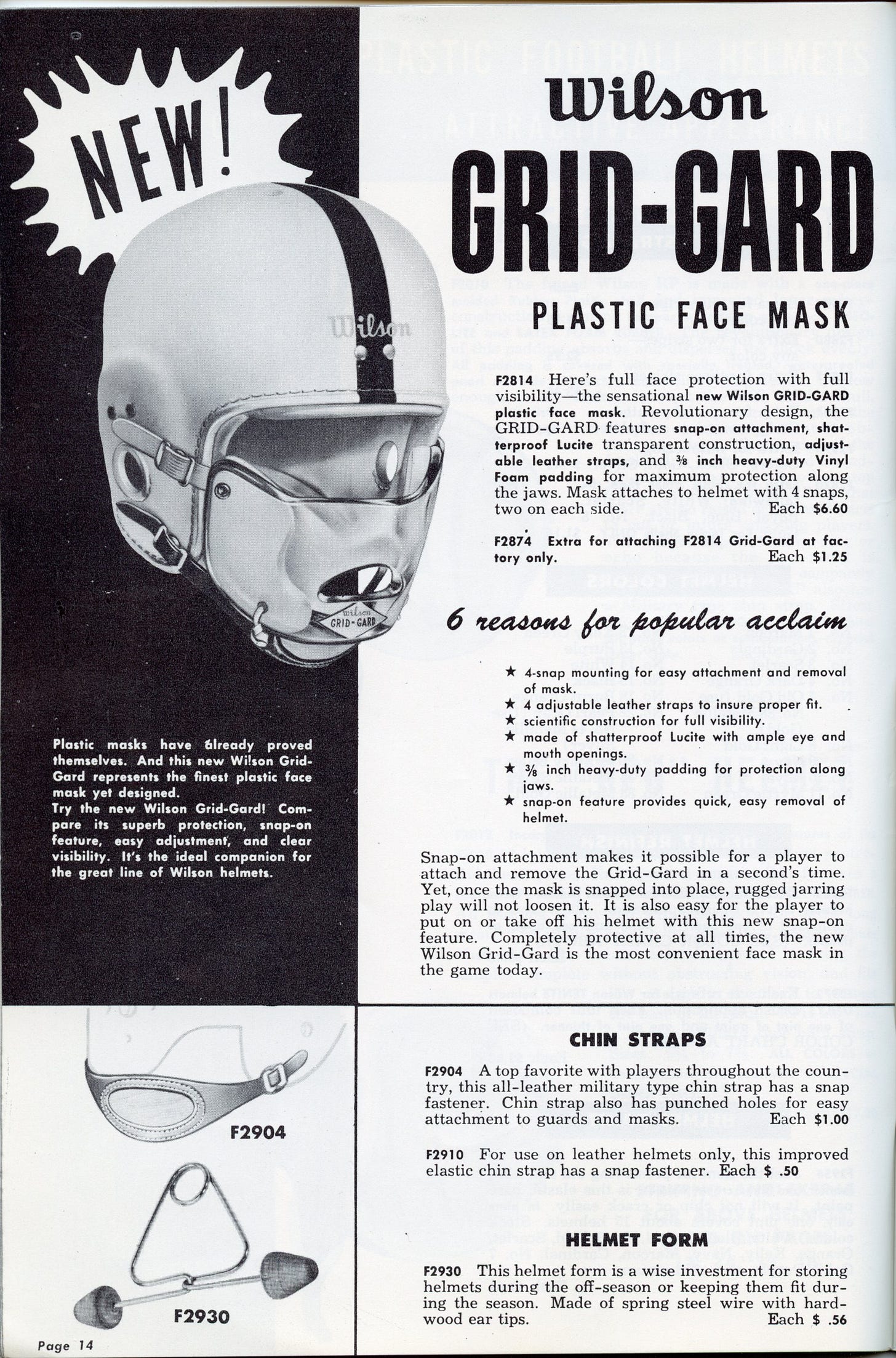

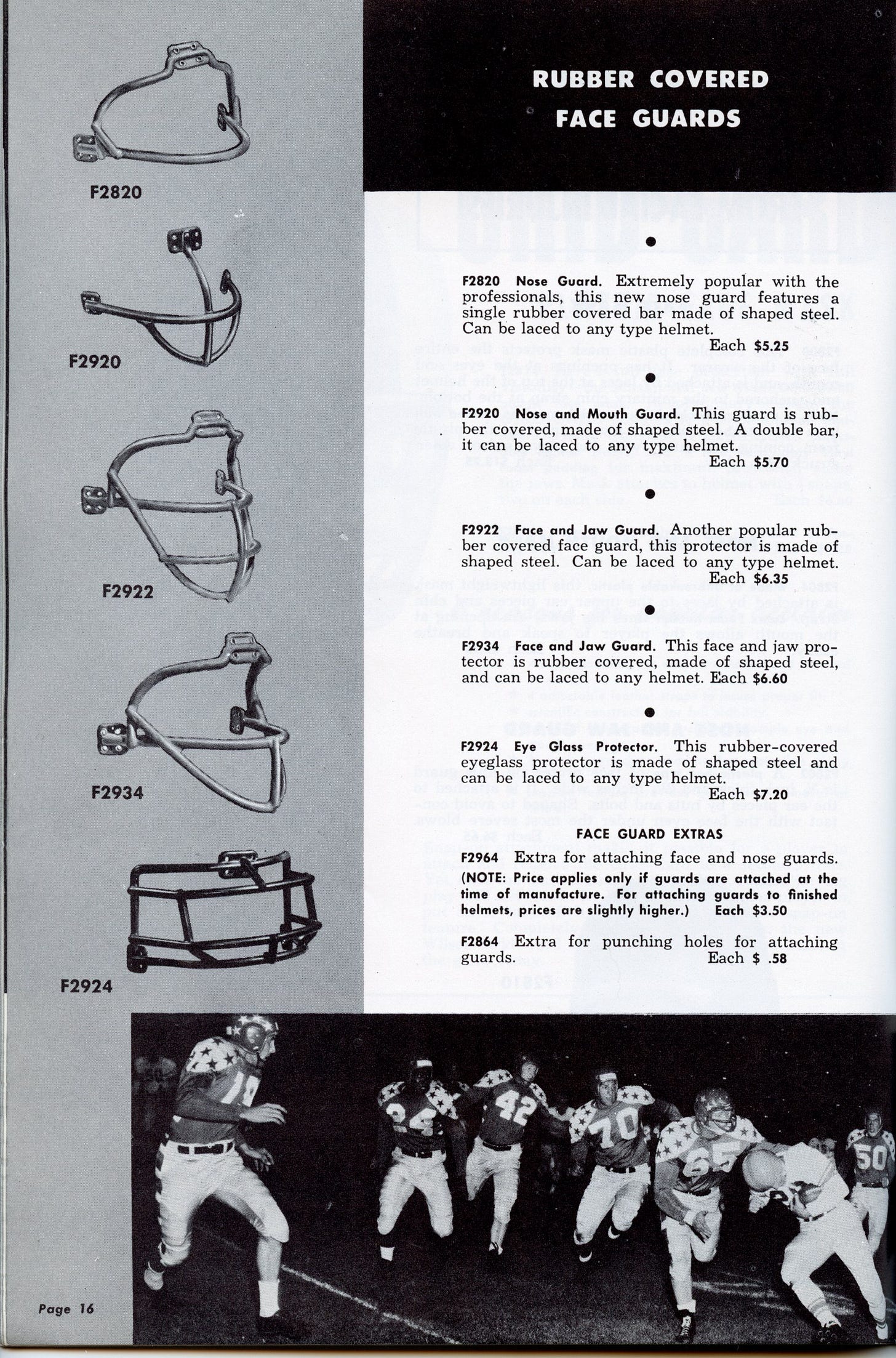
The Guardsman makes the player look like a duck, lol
One of my dearest football possessions is the GoldSmith catalogue from 1937, which shows the hat used by Michigan (as I'd like to believe)--Viking series, Gladiator model. But, beyond the studies of helmets around safety and materials, the object as an aesthetic device--something like the more usefully used billed cap or cowboy hat--has been under-examined. Its use is imprinted on our visual minds, carrying messages often beyond the utile, although one newer maker's fits the head closely, like it was an extension of the skull, and that's a hell of a message ..